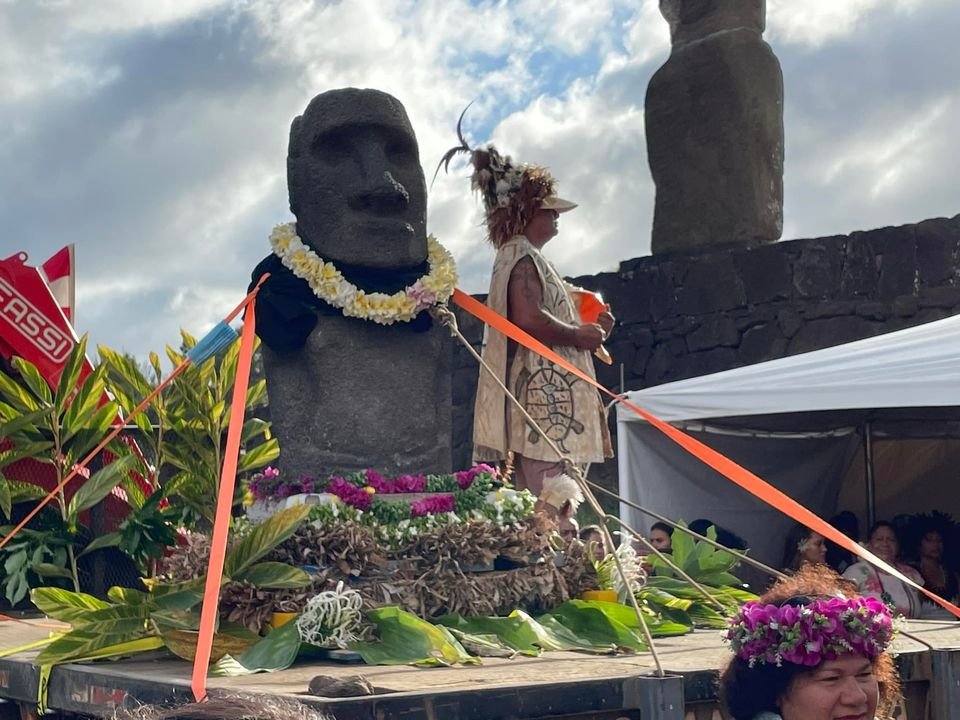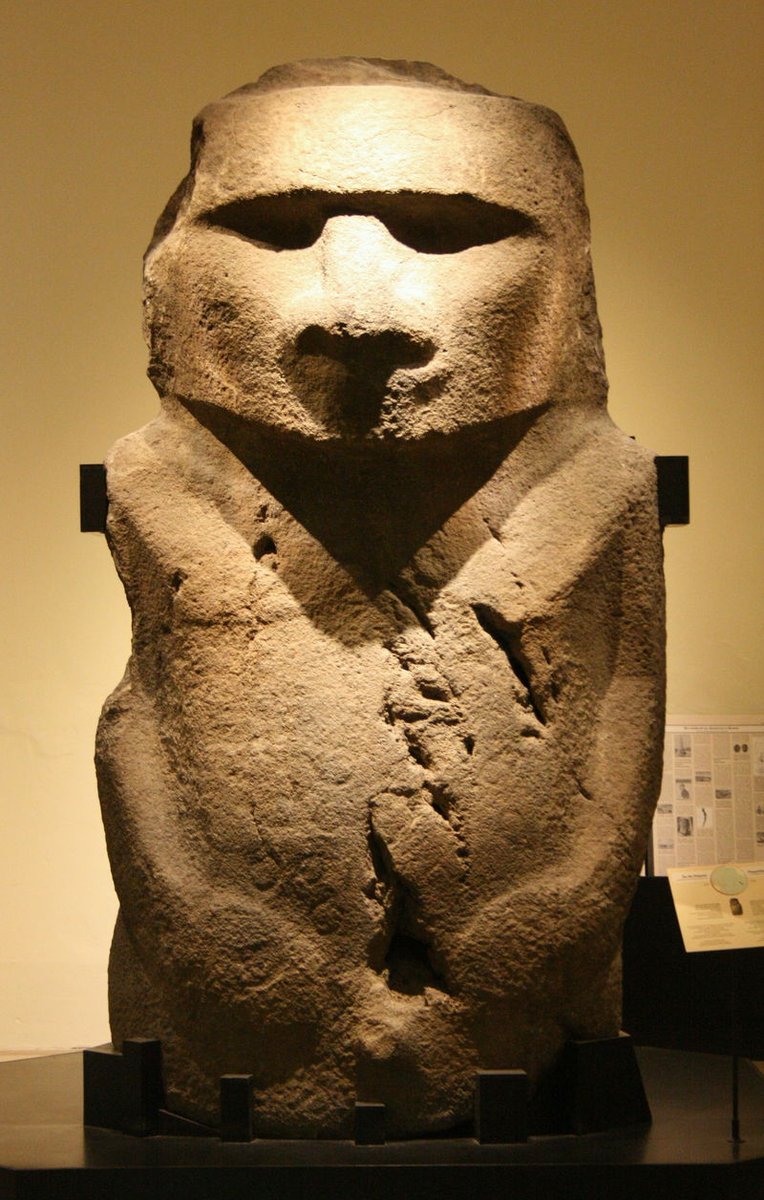
A aringa ora #moai, made of basalt (same material as Hoa Hakananai'a) and taken away in 1870, has returned home!
It arrived yesterday and made a procession from Hanga Roa to the local anthropological museum accompanied by hundreds of #rapanui
It arrived yesterday and made a procession from Hanga Roa to the local anthropological museum accompanied by hundreds of #rapanui

Some people are asking: "why to the museum instead of back to its original ahu?".
We agree that should be the way to do it under the right conditions. Besides, the MAPSE is just a provisional location since the museum is moving to Vaitea this decade.
What happens here is...
We agree that should be the way to do it under the right conditions. Besides, the MAPSE is just a provisional location since the museum is moving to Vaitea this decade.
What happens here is...

After the fall of the several moai in Ahu O Rongo (late 18th or early 19th centuries), the remains of this ceremonial center were pillaged, ravaged and destroyed mostly by colonial forces. Most of this was done in the 1870s and the 1930s. 

After the removal of Moai Hava and Hoa Hakananai'a in 1868, Chile (a growing power in the Pacific region) sent a ship in 1870 to grab their own. Since they could not move the more massive ones, they selected the smallest available as close to the anchoring spot as possible. 

It is this one, that just returned yesterday. A 1.5 meter (5 ft), 0.7 ton moai made of hard basalt from the Rano Kau lava flows. Exactly the same material as Hoa Hakananai'a. 

Two years later, the French expedition of La Flore, under admiral Lapelin, also wanted to grab their own moai. From the same ahu. Since the Chileans had taken the small one, only massive moai remained. They decapitated a statue in order to take a more "manageable" head only. 

But unfortunately that was not the end. Huge amounts of material (slabs, moai fragments, pukao and dressed rocks) from Ahu o Rongo, Ahu Kopeka Ta'e 'Ati and Ahu Mamara Nui a Ure a Ohovehi were removed to build a cove and a wharf in Hanga Roa for boats to land safely.
More remains were used in the 1930s to build pedestals for statues dedicated to Chilean heroes like Arturo Prat and Bernardo O'Higgins that decorated some streets that carried names of Chilean ships and admirals. 

In late 1934 another moai was found buried in an earlier phase of Ahu o Rongo. It's the famous Pou Hakanononga, removed in January of 1935 by members of the Franco-Belgian Expedition and taken to Europe. 



This one is currently on display at the Musées Royaux d'Art et Histoire, in Brussels, Belgium. Note the fishook motifs carved in its belly. Archaeologists of that time believed it was some sort of "fishermen god". 

Don't want to drag this for too long. The point we're trying to make here is that... there's not much left of Ahu o Rongo. Could we build a new symbolic ceremonial center there using what's left. Maybe. But that's a longer discussion.
Regards from #RapaNui.
Regards from #RapaNui.

Don't want to drag this for too long. The point we're trying to make here is that... there's not much left of Ahu o Rongo. Could we build a new symbolic ceremonial center there using what's left. Maybe. But that's a longer discussion.
Regards from #RapaNui.
Regards from #RapaNui.

• • •
Missing some Tweet in this thread? You can try to
force a refresh




